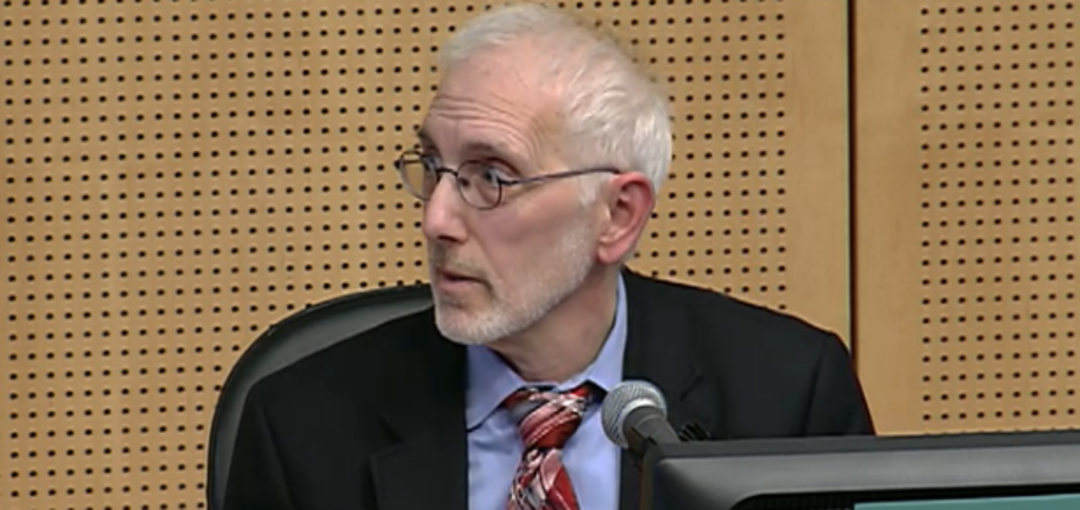Council Discusses Competing South Lake Union Proposals

The city council is in the middle of a battle over how much to require developers to spend on affordable housing (and how to spend it) in exchange for denser buildings in South Lake Union, and about the only thing they agree on is that Mayor Mike McGinn has a wholly inadequate proposal for promoting affordable housing.
(McGinn's proposal, for the wonky among you, would require developers to put $15.15 per additional square foot of residential floor area, or FAR, into an affordable housing fund, or make about five percent of on-site housing units affordable to people making 80 percent of Area Median Income—AMI—which is a little more than $55,000 a year for a household of two. Commercial development requires a slightly higher payment per square foot, $22, into the fund, also known as "payment in lieu" of building actual on-site housing, and includes payment toward a child care fund.)
The idea behind increasing the payment in lieu (or fee-in-lieu) is that developers have universally chosen it over providing actual affordable housing, because it's cheaper than doing so. Increasing the fee gives developers an incentive to provide actual housing; keeping it low puts providing such housing in the hands of public agencies, which aren't really set up to provide housing for people making middle-class incomes.
Of all the various proposals, one—from lefty affordable housing proponent Nick Licata—is particularly ambitious.
I'll get to Licata's idea in a moment, but here's what his more middle-of-the-road colleagues are proposing.
Tim Burgess: Burgess' proposal attempts to iron out the difference for developers between paying into the fund or actually buiding affordable housing themselves. His plan retroactively applies the Consumer Price Index—the inflation rate—back to 2001 for commercial development and back to 2006 for residential development, increasing the amount it would cost developers to write a check instead of building housing to a level where building actual housing would pencil out at the same level as paying into the affordable housing fund.
That works out to about $29 per each extra square foot for commercial buildings, or about $22 per extra square foot of residential footage. Burgess' proposal would also create an "expert advisory panel" to come up with ongoing policies.
Sally Clark: Similarly, in an effort to encourage developers to build actual housing, Clark has proposed increasing the fee-in-lieu to make it more expensive to pay in lieu of building housing, although her legislation would increase the fee more gradually than Burgess', adjusting the rate to 2012 levels this year, to 2009 levels next year, and to 2006 levels (2001 for commercial) in 2015, while also requiring 10 percent of new units to be affordable to people making 80 percent of median.
That works out to a payment of $22.59 a square foot for extra residential space, and $29.27 for commercial.
Mike O'Brien: O'Brien's proposal would do essentially what Clark's would, but faster, adjusting the fee-in-lieu rate immediately to the rate of inflation since 2006 (for residential) and 2001 (for commercial.) O'Brien, much like Burgess, would also establish a new committee to review affordable housing policies citywide.
Nick Licata: Licata diverges from his colleagues by addressing the problem straight on. Licata's proposal (which he referred to as "the maligned yellow sheet") would require developers to build 10 percent of their total units—that's between 29 and 60 percent of all the extra space they'd get under the incentive program, depending on how much they choose to take advantage of—at levels affordable to people making, respectively, up to 60 percent of median (five percent) and between 60 and 80 percent of median (5 percent).
That works out, in sharp contrast to his colleagues' proposals, to between $60 a foot for on-site housing and $96 for payment into a city fund.
Noting that San Francisco has much more stringent requirements (not to mention rent control—15 percent of on-site units have to be affordable for people making 55 percent or less of the area median) "and their economy has not collapsed," Licata said, "This is a prime opportunity. ... I appreciate these task forces and study groups, but the problem is that they won't provide any information until after the upzone."
Licata's colleagues were skeptical, to say the least. Jean Godden said she found council member O'Brien's and Burgess' proposals "more in tune with what we want to do in Seattle," and Burgess said, "We need to be a bit cautious about taking the Licata Leap." Bruce Harrell, adopting his usual rhetorical-question tactic, asked, "at what point does it become a disincentive [for developers]? It’s almost like who blinks first with these kinds of numbers,"
Licata's response: "There's a lot of things we don't know." But we do know that his proposal, unfortunately, stands little chance of winning his colleagues' approval.




